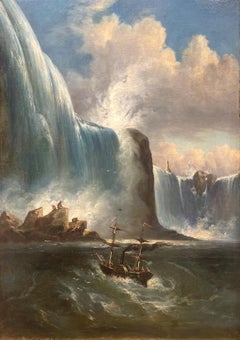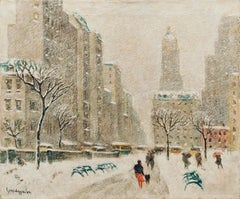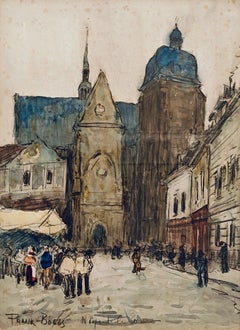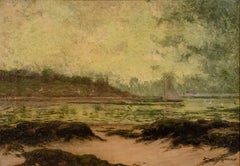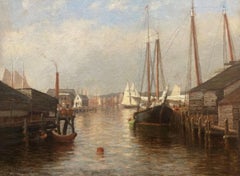Lincoln Glenn Landscape Paintings
1840s Hudson River School Landscape Paintings
Canvas, Oil
1960s American Impressionist Landscape Paintings
Canvas, Oil
Early 1900s Impressionist Landscape Paintings
Paper, Watercolor
1920s American Modern Landscape Paintings
Canvas, Oil
Late 19th Century American Impressionist Landscape Paintings
Canvas, Oil
1880s American Impressionist Figurative Paintings
Canvas, Oil
1940s Impressionist Landscape Paintings
Oil
John E. Costigan"Autumn Wood Interior" John E. Costigan, Early 20th Century Landscape Painting, 1946
Mid-20th Century Landscape Paintings
Canvas, Oil
1920s American Impressionist Figurative Paintings
Oil, Canvas
Early 20th Century Modern Landscape Paintings
Canvas, Oil, Board
1980s Modern Landscape Paintings
Paper, Pastel
1990s Modern Landscape Paintings
Paper, Pastel
1870s Academic Landscape Paintings
Canvas, Oil, Board
19th Century Landscape Paintings
Canvas, Oil
1980s Landscape Paintings
Canvas, Oil
1980s Landscape Paintings
Canvas, Oil
1910s American Impressionist Landscape Paintings
Canvas, Pastel
1950s Modern Landscape Paintings
Canvas, Oil
Mid-20th Century Impressionist Landscape Paintings
Canvas, Oil
Early 20th Century American Impressionist Landscape Paintings
Canvas, Oil
Early 1900s Hudson River School Landscape Paintings
Canvas, Oil
1870s Hudson River School Landscape Paintings
Oil, Panel
1910s Impressionist Landscape Paintings
Canvas, Oil
Early 1900s American Modern Landscape Drawings and Watercolors
Paper, Watercolor
1940s American Impressionist Landscape Paintings
Oil, Board
1940s American Impressionist Landscape Paintings
Oil, Board
1940s American Impressionist Landscape Paintings
Oil, Board
1940s American Impressionist Landscape Paintings
Oil, Board
1940s American Impressionist Landscape Paintings
Oil, Board
1940s American Realist Landscape Paintings
Canvas, Oil
1970s Realist Landscape Paintings
Oil, Board
Late 19th Century Impressionist Landscape Paintings
Canvas, Oil
1930s American Realist Landscape Paintings
Canvas, Oil
Early 20th Century Impressionist Landscape Paintings
Canvas, Oil
Early 1900s American Impressionist Landscape Paintings
Oil, Board
Late 19th Century Landscape Paintings
Paper, Watercolor
1930s American Realist Landscape Paintings
Canvas, Oil
1930s American Realist Landscape Paintings
Canvas, Oil
1910s American Impressionist Landscape Paintings
Oil, Wood Panel
1920s American Modern Landscape Paintings
Canvas, Oil
1990s Contemporary Landscape Paintings
Oil Pastel, Acrylic, Board, Pencil
1880s Hudson River School Landscape Paintings
Canvas, Oil
1910s Impressionist Figurative Paintings
Canvas, Oil
1940s Post-Impressionist Landscape Paintings
Oil, Board
1930s American Realist Landscape Paintings
Oil, Canvas
1950s Modern Landscape Paintings
Canvas, Oil
1950s American Modern Landscape Paintings
Canvas, Oil
1940s American Modern Landscape Drawings and Watercolors
Paper, Watercolor
1970s Contemporary Landscape Paintings
Canvas, Acrylic
1960s Folk Art Landscape Paintings
Paper, Watercolor, Ballpoint Pen, Color Pencil
Early 20th Century Impressionist Landscape Paintings
Oil, Board
1880s Barbizon School Landscape Paintings
Canvas, Oil
Mid-20th Century Impressionist Landscape Drawings and Watercolors
Paper, Watercolor
Late 20th Century American Realist Landscape Paintings
Paper, Casein
1930s American Impressionist Landscape Paintings
Canvas, Oil
1850s Hudson River School Landscape Paintings
Canvas, Oil
1920s Post-Impressionist Landscape Drawings and Watercolors
Paper, Watercolor
1860s Hudson River School Landscape Paintings
Canvas, Oil
1970s Contemporary Figurative Paintings
Oil, Board
1910s American Impressionist Landscape Drawings and Watercolors
Paper, Watercolor
